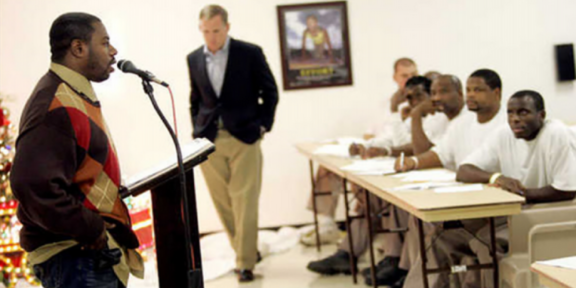By Morgan Minix, Howard University News Service
Uber’s meteoric rise as a ridesharing platform has revolutionized transportation throughout D.C. in recent years and has especially affected taxi drivers.
According to research conducted by WAMU, there are approximately 185,000 registered Uber drives in the greater Washington region. According to buildfire.com, D.C. residents spend approximately $79 million on Ubers every month. This large number of registered cars has had a clear effect on D.C., a city that’s touted for its extensive public transportation.
For drivers and passengers of Ubers alike, convenience is key. Ignatius Fonchum has been driving for Uber for a year and a half and credits its accessibility as a key reason for its success.
“I can make my own hours and its flexible with my work schedule,” he said. Fonchum drives for Uber as a side job, his day job is construction which he said felt inconsistent. For Fonchum, Uber is a way to bring in some extra income.
Fonchum’s praise of Uber did not stop at its convenience. He also praised the freedom the app presented saying, “Nobody tells you when to go home or when to go to work, your body tells you what to do”
While Fonchum was effusive in his praise of Uber, Albert Kadebusoye was similar in his comments on driving a taxi. Kadebusoye is a driver for Red Cab DC and has similarity found his experience mostly positive. “I can travel anytime, go home anytime, as long as you pay the rent and insurance, you’re good to go,” he said.
The differences that make the disruptive technology of Uber so effective come in the registration process and the overhead. Both Fonchum and Kadebusove described the process of becoming an approved driver for their respective companies.
Fonchum’s process took a week. It involved submitting his information to Uber, registering his car and passing a background check. For Kadebusove, the process involved having at least one-year experience driving in the D.C. area, going to the taxi cab commission, filling out forms, going through rigorous tests and going to the FBI to submit his fingerprints.
Fonchum’s overhead is little to none. His sole responsibility is to maintain his car. Kadebusove has to ensure he pays his rent on the car as well as insurance fees. Kadebusove also does not own his taxi, rather, he rents the taxi which leads to the multiple fees he has to pay.
Nathan Wright, a market coordinator at Maven, has extensively covered the trends of ridesharing. Maven is a subsidiary of GMC and rents cars out via an app. Basically, its Uber for renting cars over short periods of time. In his capacity as market coordinator, Wright has studied D.C. metropolitan transportation trends throughout the past year.
“In D.C. there’s a free for all as far as Ubers and taxis”, he said of the current situation. Wright says that Uber’s technology appeals to Millennials and Gen Z, and that’s the key to their quick success. On the other hand, he said, “Baby Boomers have been keeping taxis prevalent because that’s the form of transportation they know.”
Wright forecasted a dire future for the taxi industry, however. He believes that the taxi model is no longer appealing to either rider or driver. Through app-based technology, Ubers have made themselves accessible to users. And through quick applications, loose regulations, and personal car use, Uber has made itself the optimal option for drivers.
But taxis are not going without a fight. Wright applauded taxi driver’s commitment and ability to adjust. “Taxis have improved on their customer service, availability, and also have placed themselves in high traffic areas. They realized that availability is key,” he said.











